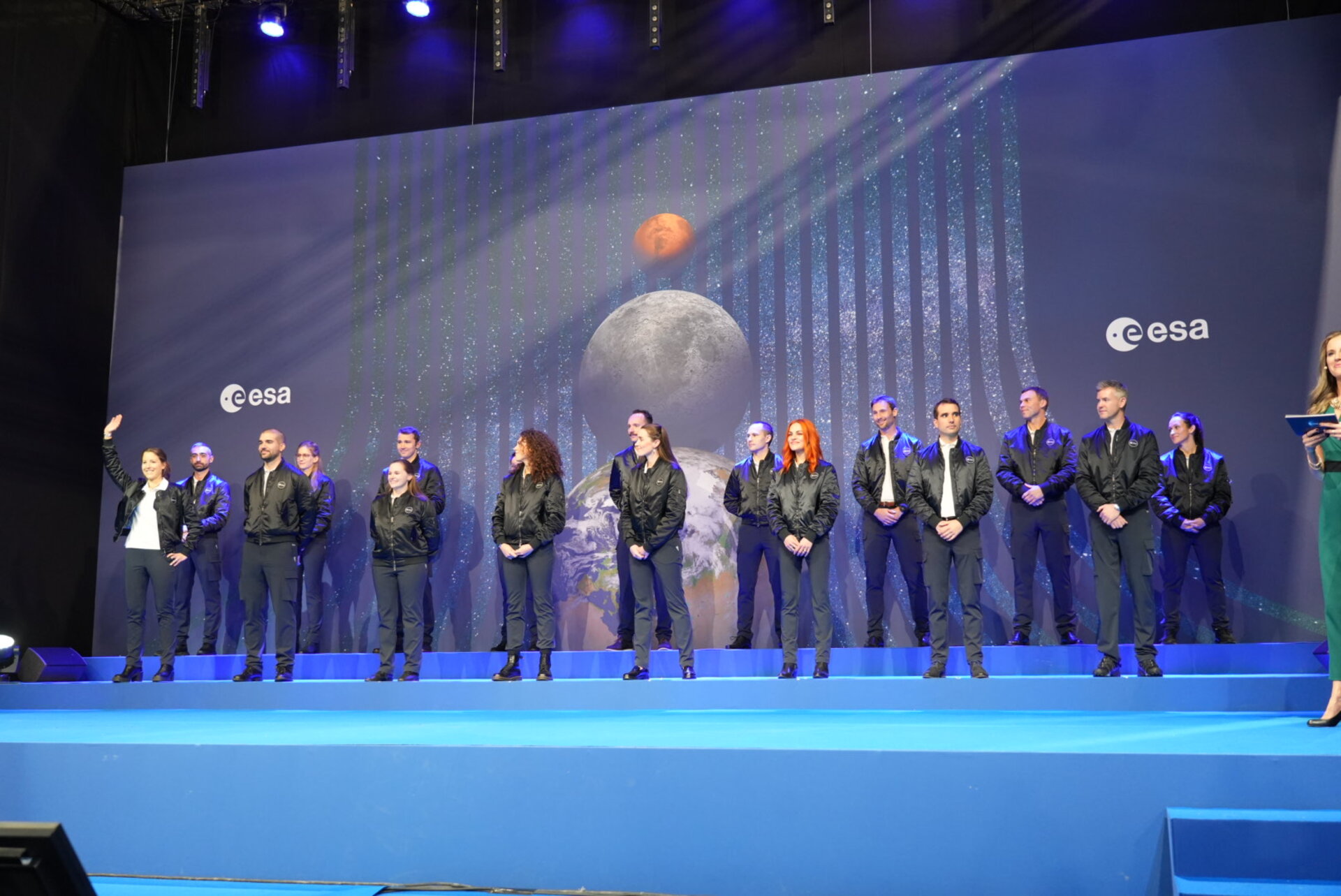ESA presents new generation of astronauts
The European Space Agency has chosen 17 individuals to form its newest astronaut class from more than 22 500 applicants from across its Member States. The ESA astronaut class 2022 includes five astronaut candidates and 12 members of the European astronaut reserve.
ESA Director General Josef Aschbacher introduced the members of the 2022 ESA astronaut class, the first new recruits in 13 years, today at the Grand Palais Éphémère in Paris, France, shortly after the ESA Council at Ministerial level ended.
The ESA astronaut class 2022
| Name | Member State | |
| Sophie Adenot | France | Astronaut Candidate |
| Pablo Álvarez Fernández | Spain | Astronaut Candidate |
| Meganne Christian | UK | Member of the Astronaut Reserve |
| Anthea Comellini | Italy | Member of the Astronaut Reserve |
| Rosemary Coogan | UK | Astronaut Candidate |
| Sara García Alonso | Spain | Member of the Astronaut Reserve |
| Raphaël Liégeois | Belgium | Astronaut Candidate |
| John McFall | UK | Member of the Astronaut Reserve |
| Andrea Patassa | Italy | Member of the Astronaut Reserve |
| Carmen Possnig | Austria | Member of the Astronaut Reserve |
| Arnaud Prost | France | Member of the Astronaut Reserve |
| Amelie Schoenenwald | Germany | Member of the Astronaut Reserve |
| Marco Sieber | Switzerland | Astronaut Candidate |
| Aleš Svoboda | Czech Republic | Member of the Astronaut Reserve |
| Sławosz Uznański | Poland | Member of the Astronaut Reserve |
| Marcus Wandt | Sweden | Member of the Astronaut Reserve |
| Nicola Winter | Germany | Member of the Astronaut Reserve |
“Today we welcome the 17 members of the new ESA astronaut class 2022. This ESA astronaut class is bringing ambition, talent and diversity in many different forms – to drive our endeavours, and our future.
“The continuous exploration in low Earth orbit on the International Space Station, going forward to the Moon – and beyond,” said ESA Director General Josef Aschbacher.
ESA’s director of Human and Robotic Exploration, David Parker, added “This is an extraordinary time for human spaceflight and for Europe. After the successful launch of Artemis I with ESA’s European Service Module powering Orion to the Moon, we are on the forefront of human space exploration. We are delighted to have this group of extremely talented people, to continue European science and operations on the International Space Station and beyond.”
Watch a replay (below) of the announcement event, held at the Grand Palais Éphémère in Paris, France, and moderated by Louise Houghton.
ESA’s new astronaut candidates will take up duty at the European Astronaut Centre in Cologne, Germany. They will be trained to the highest level of standards as specified by the International Space Station partners.
Frank De Winne, head of the European Astronaut Centre and ESA’s International Space Station programme manager said: “We are excited to welcome the new ESA astronaut class of 2022 and I am looking forward to see all these ambitious young astronaut candidates joining us for their first training at ESA’s European Astronaut Centre in spring 2023, going forward to explore and shape space exploration.”
After completion of the one-year basic training, the new astronauts will be ready to enter the next Space Station training phase and, once assigned to a mission, their training will be tailored to specific mission tasks.
For the first time, ESA has established a reserve pool of astronauts. This reserve list is composed of candidates who were successful throughout the entire selection process but cannot be recruited at this point in time. Members of the European astronaut reserve remain with their current employers and will receive a consultancy contract and basic support. They will start basic training in case a flight opportunity has been identified.
ESA also selected one member of the reserve who will take part in ESA’s feasibility study “Fly!” to develop options for the inclusion of astronauts with physical disabilities in human spaceflight and possible future missions.


